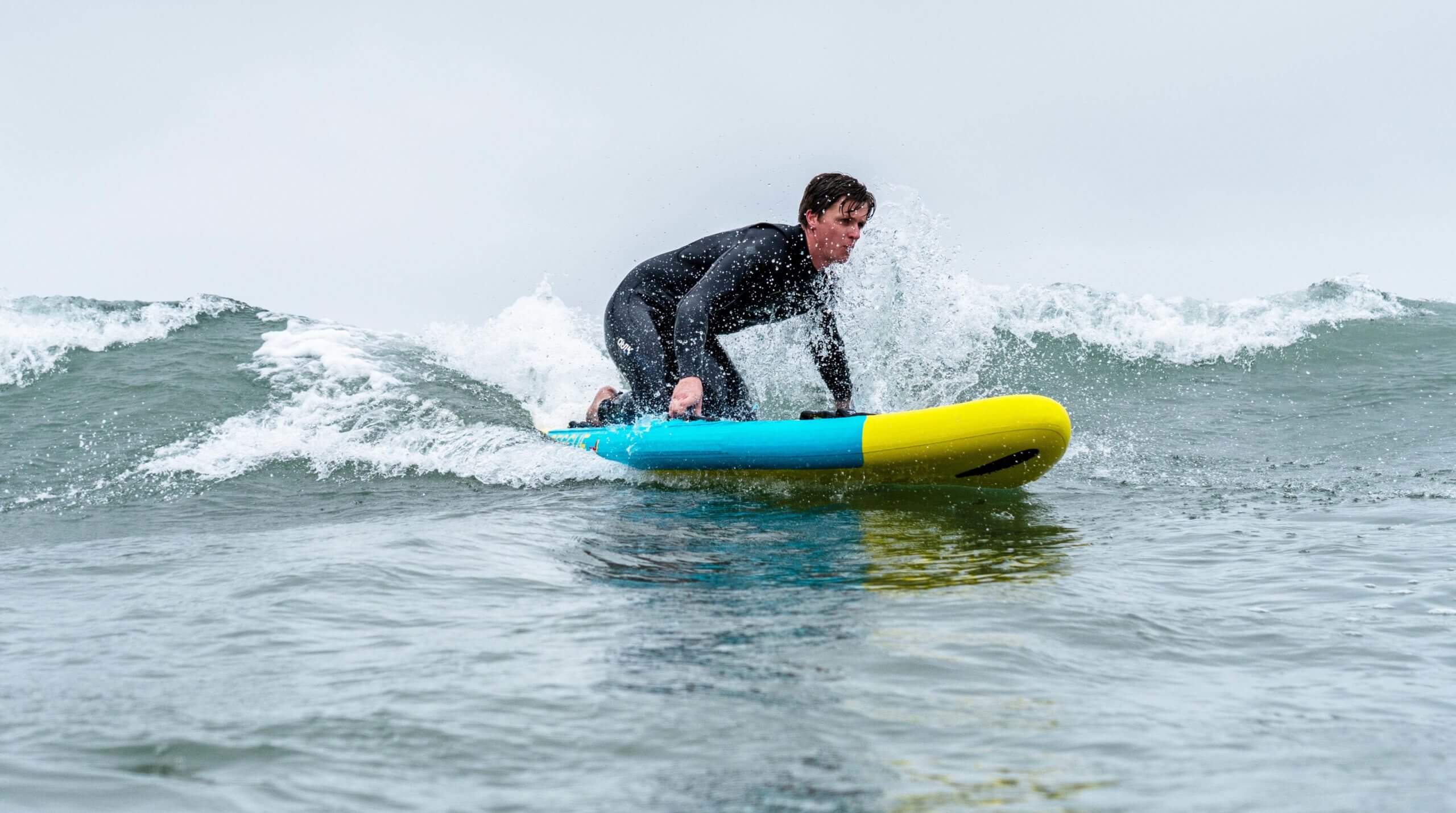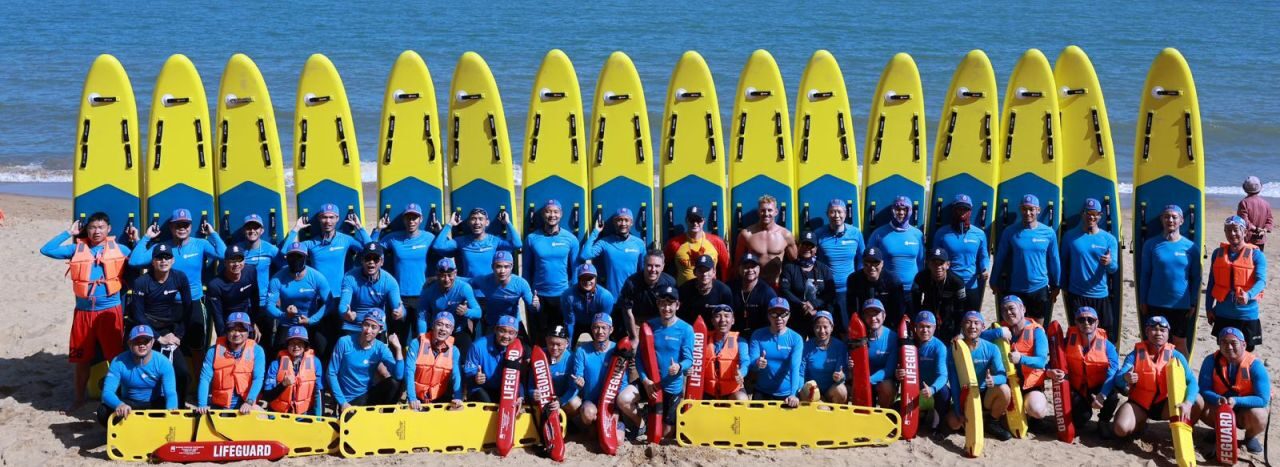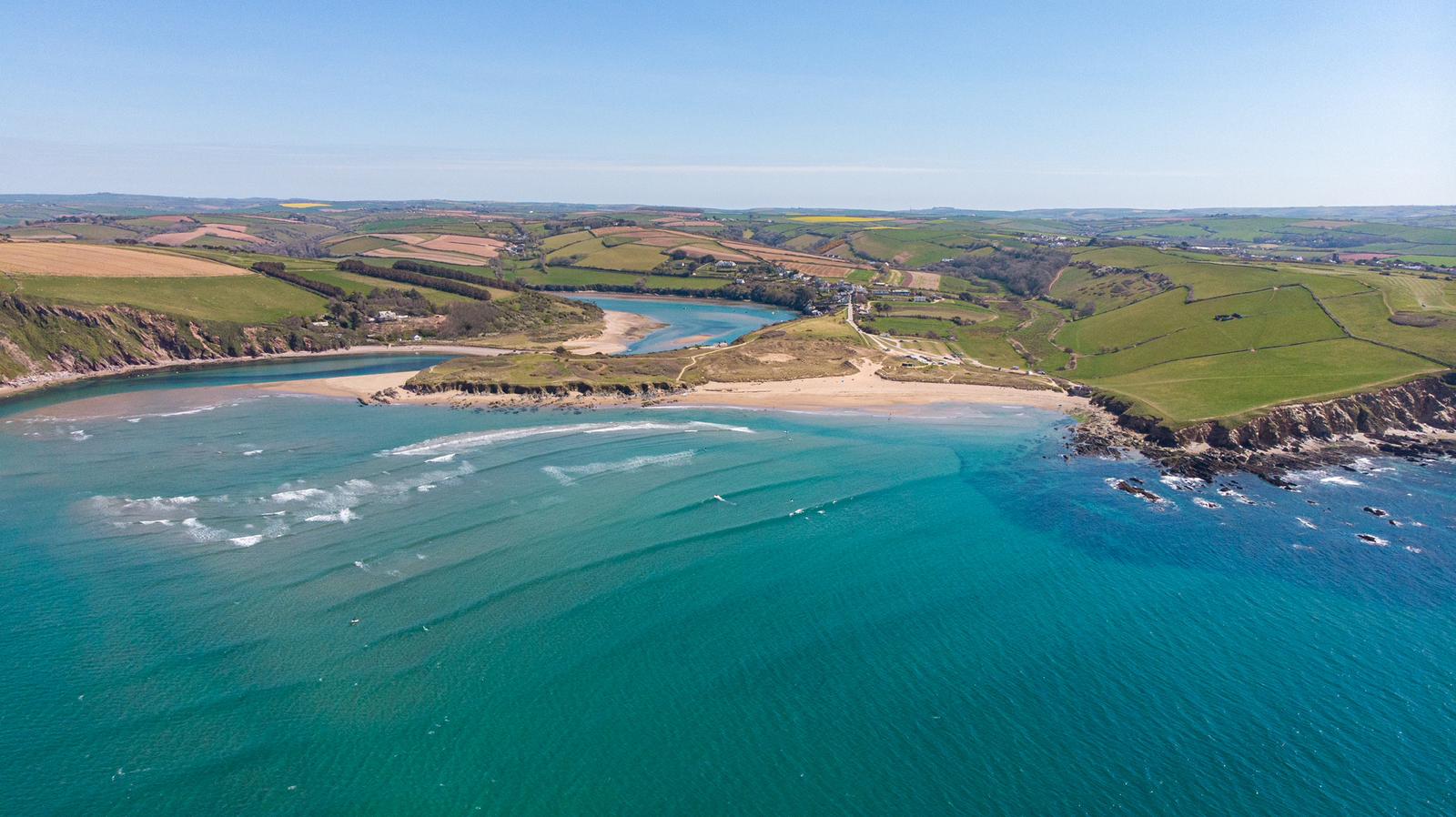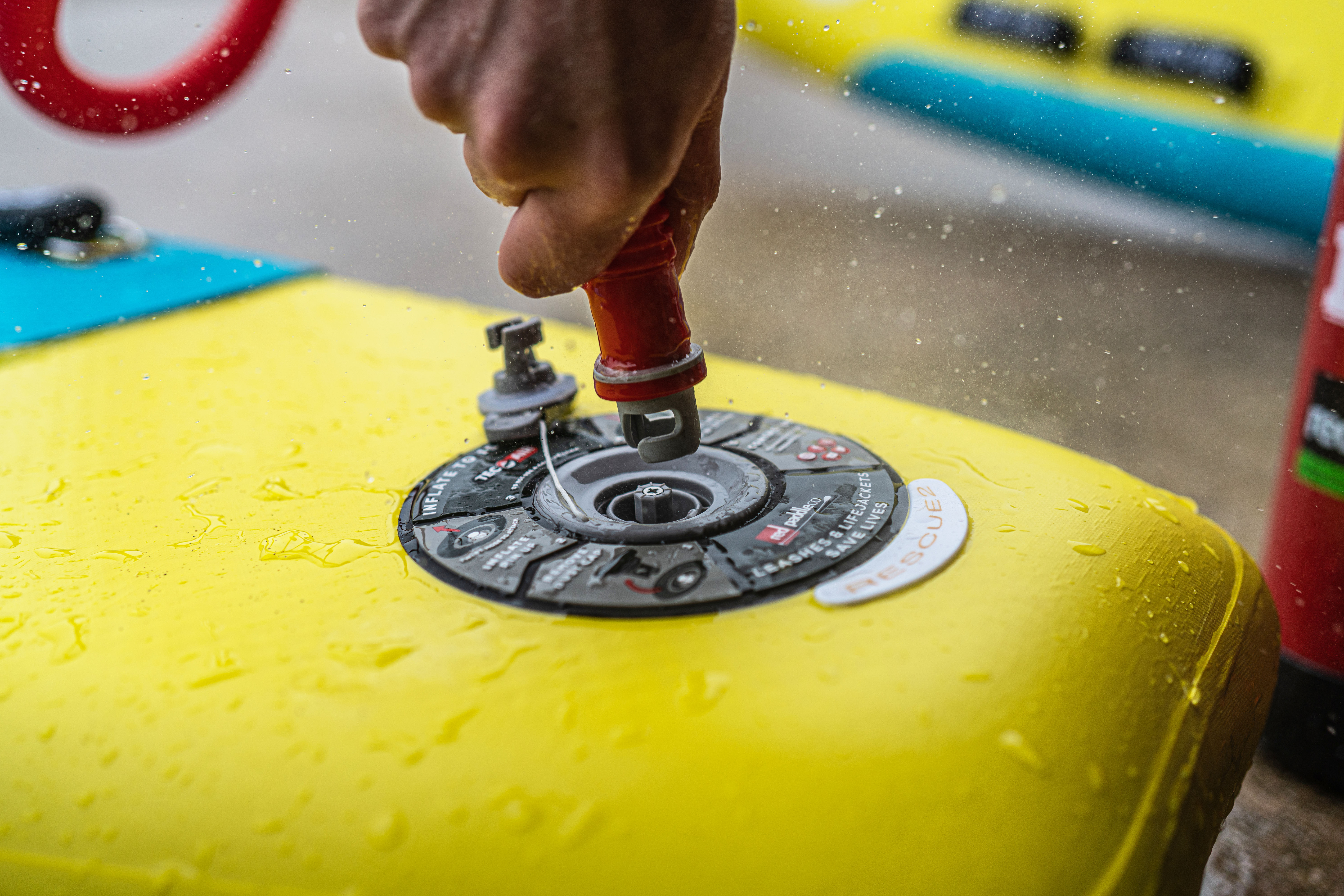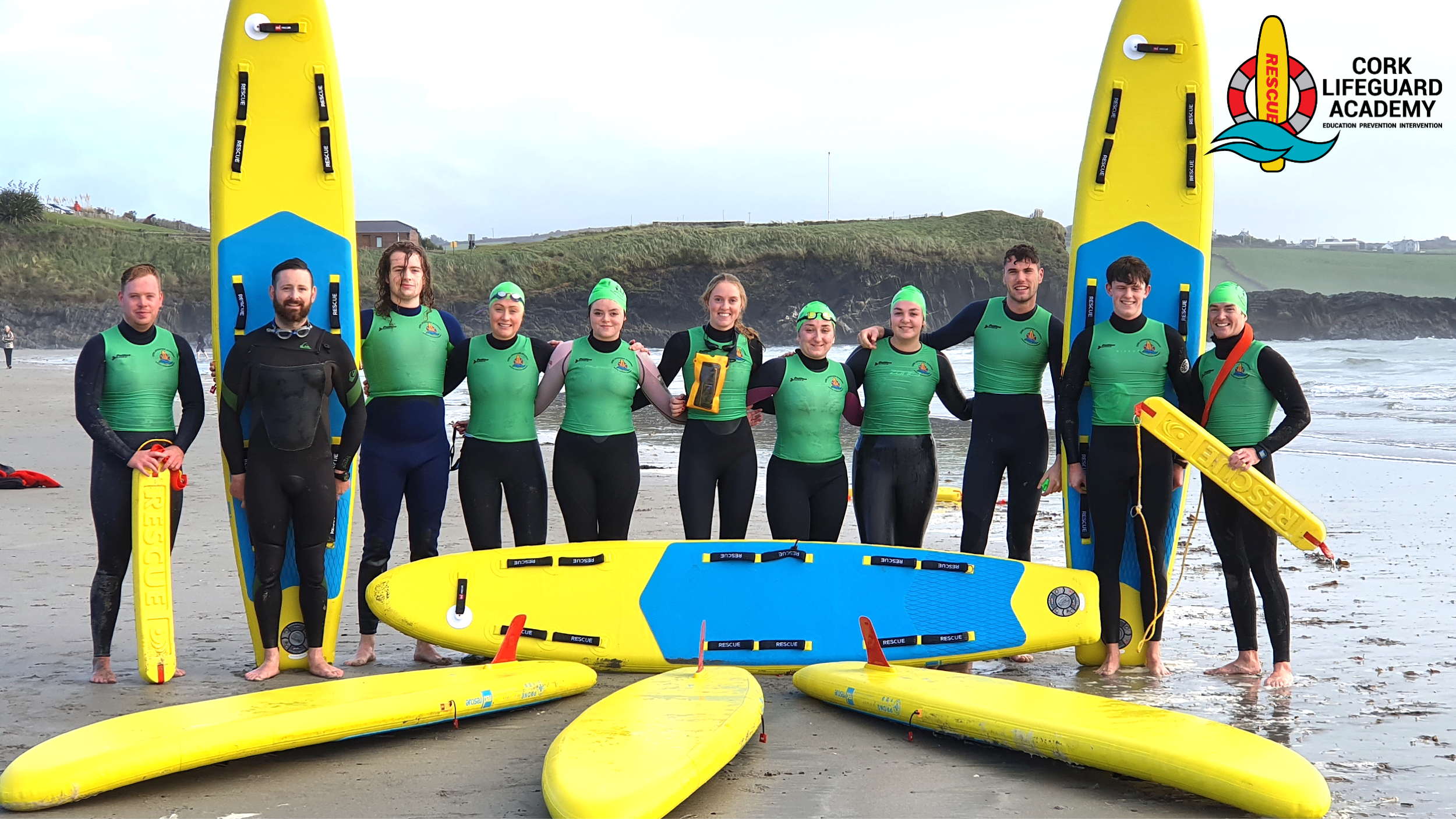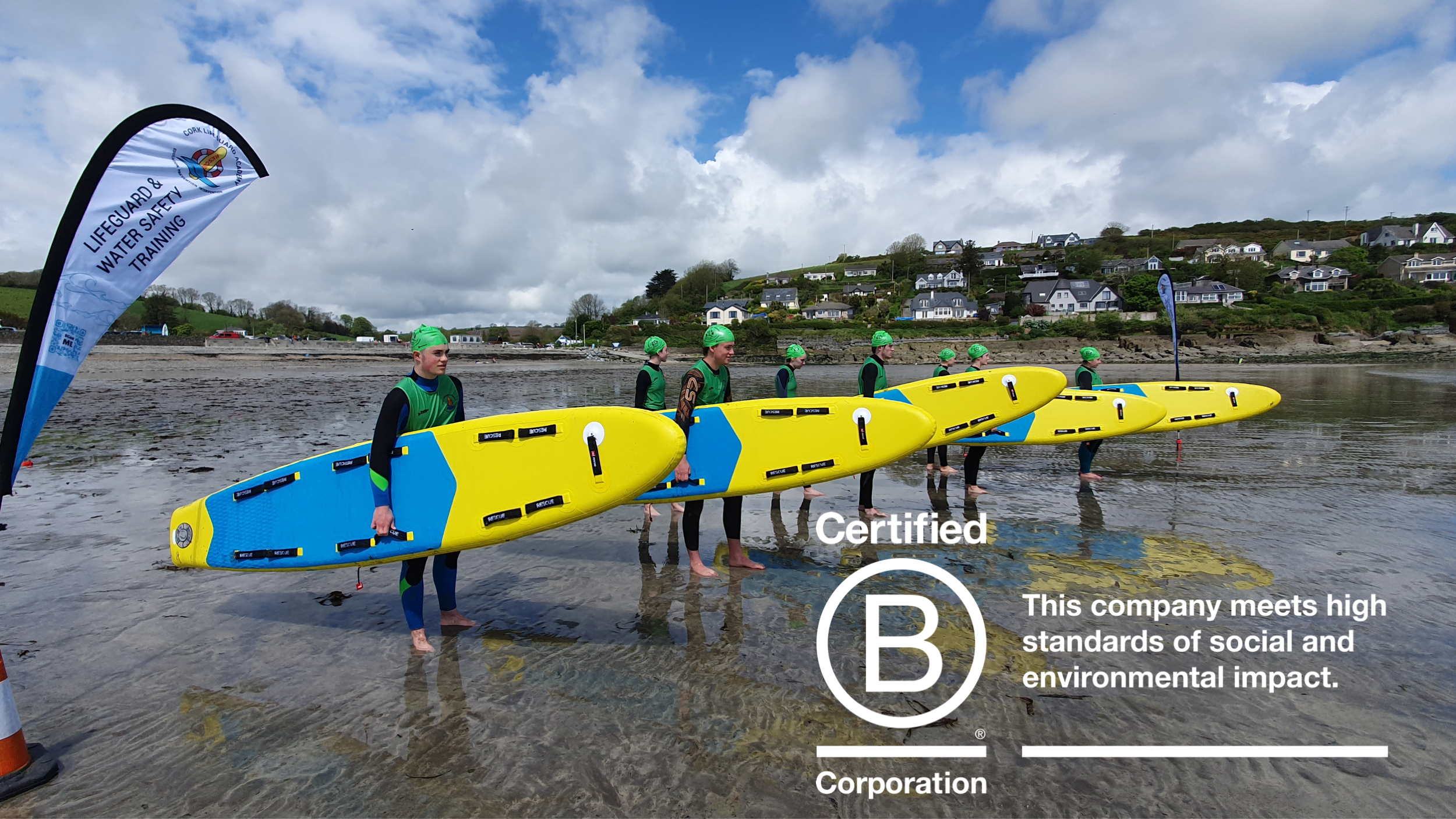As Lifesavers, it is imperative that you have complete confidence in your equipment. When you need it most, it has to perform. When it comes to Inflatables, the most commonly held concern tends to be the risk of the board puncturing and dramatically failing. With this in mind, the idea of making the board double chamber to add a redundancy system can be inviting, but – Double Chamber equals Double Danger.
To understand the reasons why we do not use double chamber construction, we need to look at the fundamental requirement of an Inflatable Board; to perform, they must be built to contain serious pressure. As a comparison, an Arancia IRB is recommended to operate at 3.91 PSI (27 kPa – as taken from the 2018 SLSNZ IRB Training Manual), whereas we recommend our boards be operated at 20 PSI (and they must be capable of holding much more than that). This equates to more than a tonne of internal pressure per square inch.
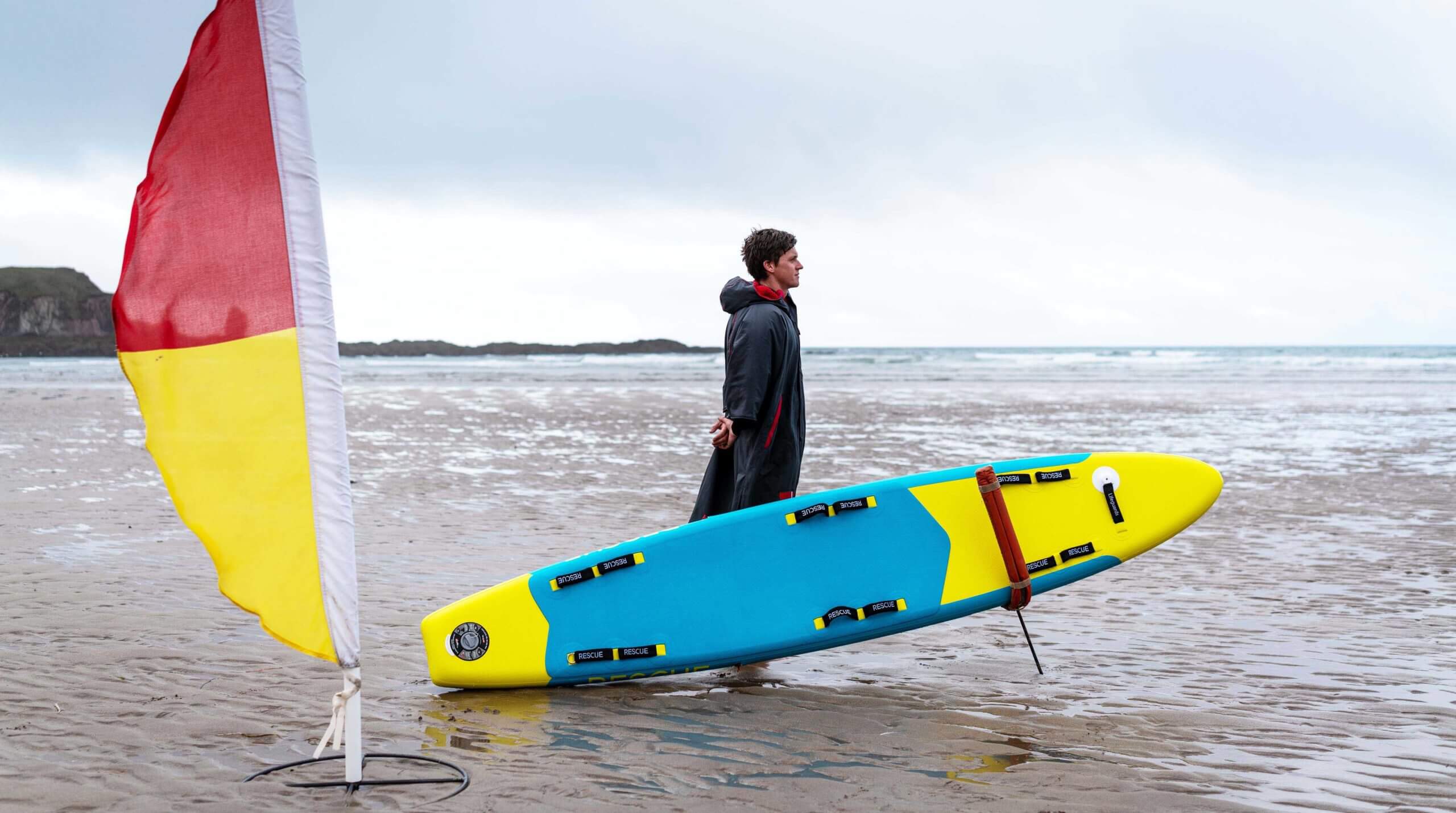
In order to create a double chamber Inflatable Rescue board, a hole must be cut out of the completed board. A new rail must be formed on both the inside of the of this hole and around the outside of the cut out section (effectively creating another small board). Both pieces must then be perfectly re-aligned and glued back into position. This greatly increases the number of possible failure points and reduces the board’s ability to contain all of that pressure.
The board needs to be capable of being regularly inflated/deflated and rolled up. On top of this, the two chambers would not be inflated simultaneously and to exactly the same pressure: meaning that the differences in pressure would put a huge amount of stress on those joints/seams between the two chambers. The result, is a board with a much greater failure risk, significantly decreasing its potential longevity.
Futhermore, the idea of a redundancy system is to enable the lifesaver to get back to the shore safely. If either of these sections failed then the performance of the board would be severely affected. Considering the argument for a single chamber system is that the outer shell or rails could fail, this would also assume the outer section of the double chamber board is most vulnerable leaving the lifesaver with a very small volume chamber and huge amounts of drag from the surrounding skirt.
The catch twenty-two is that the use of double chamber will increase board failure rate. The higher the failure rate the more lifesavers become grateful for the second chamber. Ultimately solving a problem that would not have occurred if using a carefully constructed, single chamber board made using the finest materials and industry leading techniques.


Red Paddle Co (Red International Group) are the undisputed industry leaders when it comes to making Inflatable Boards, with over a decade of experience building the world’s stiffest and most reliable SUP’s. Utilising Red’s industry leading TEC AIR construction process, all our boards are made in our own private facility, unlike any other inflatable board manufacturer on the planet. Our boards are sold in over 60 countries worldwide, with less an a 0.5% warranty return rate – proof that a well-made single chamber board can more than hold its own in huge range of conditions and environments.
To ensure that our Red Rescue boards are durable enough for the lifesaving world, we use our MSL Tough™* material laminate. Our boards are built to the highest possible specification, using the best possible materials and techniques. They are designed to contain the internal pressure and withstand the external forces it will come into contact with.
Any failure of our board will be much less dramatic than you may imagine – it’s not going to simply burst and deflate like a balloon. With a slow leak, the board will still maintain above the 3.91 PSI of the Arancia Sponsons for a long time and the drop stitch core will continue to hold the boards shape. In short, a double chamber may feel like the safe and sensible option. For many forms of Inflatable Equipment, it is: It would be madness to suggest that an IRB would be better if designed with a single, continuous sponson. But, in the case of inflatable boards our years of R+D has found the opposite to be true.
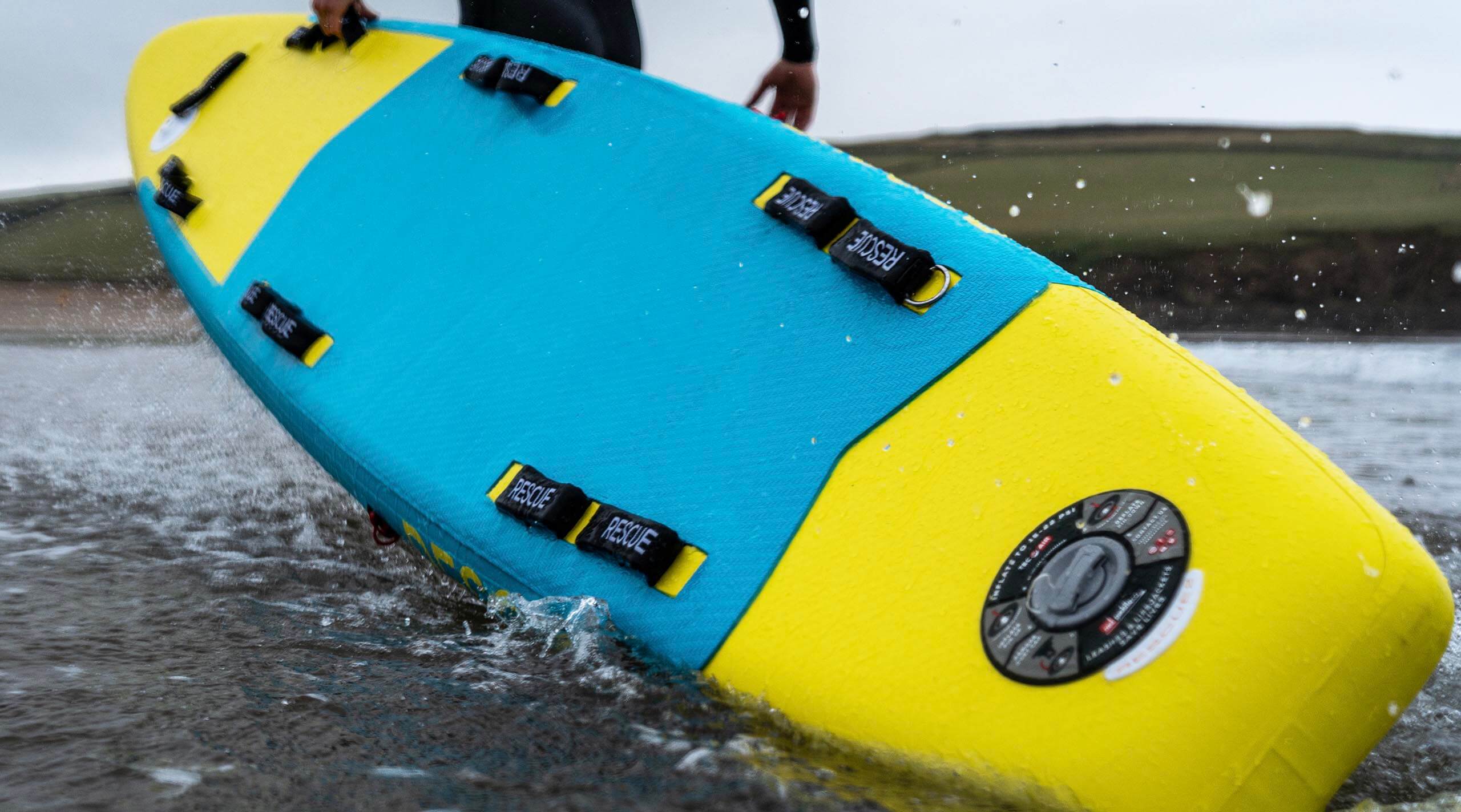
This decision was vindicated and supported by the RNLI: in the early stages of their involvement, they exposed our board to their highly exacting Risk Management Matrix, which all of their operational kit must pass through – FMECA (Failure Modes Effect and Critical Analysis). They found that the “potential to puncture/damage the board” carried a “tolerable” level of risk, as the “penalties of reduction would exceed the improvement gained”. Supporting our view that the conversion to a double chamber approach would be detrimental to the ability of the board to perform in its intended environment.
It should be noted, that the RNLI advised that in order to minimise the risks, the Lifesavers using the board should follow carefully laid out SOP’s – ensuring that the board pressure is frequently and routinely monitored, to avoid over-inflation and to ensure speedy identification of any slow-leaks. The boards should also be well cared for and maintained to promote their longevity. This is something that we fully support and advise.
If you want to know more about the techniques and processes used to craft our Red Rescue Boards, then read our blog about their general construction here.
If you want to know more about the techniques and processes used to craft our Red Rescue Boards, then read our blog about their general construction here.
*Trademark registered by Red Paddle Co

